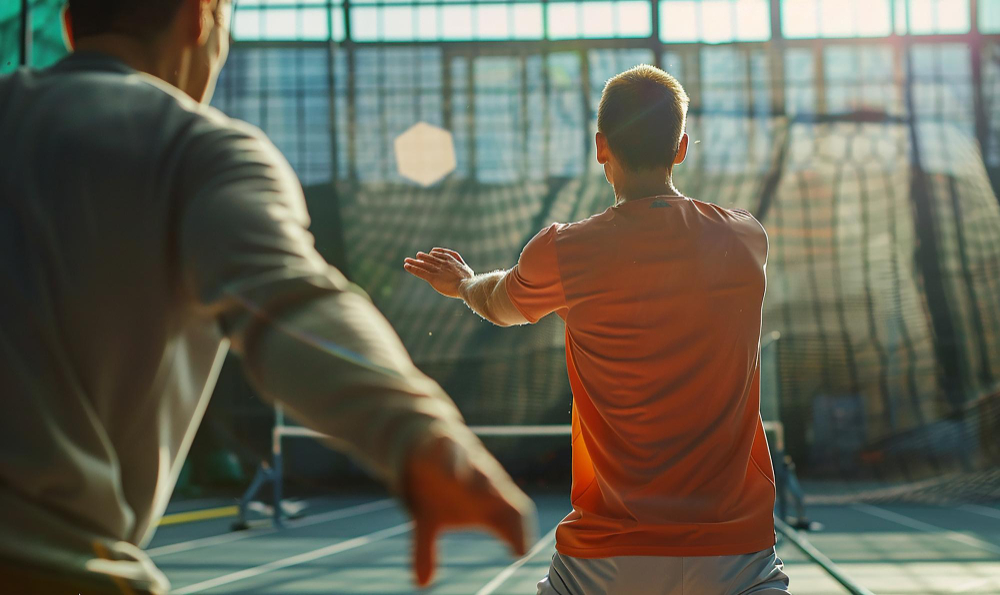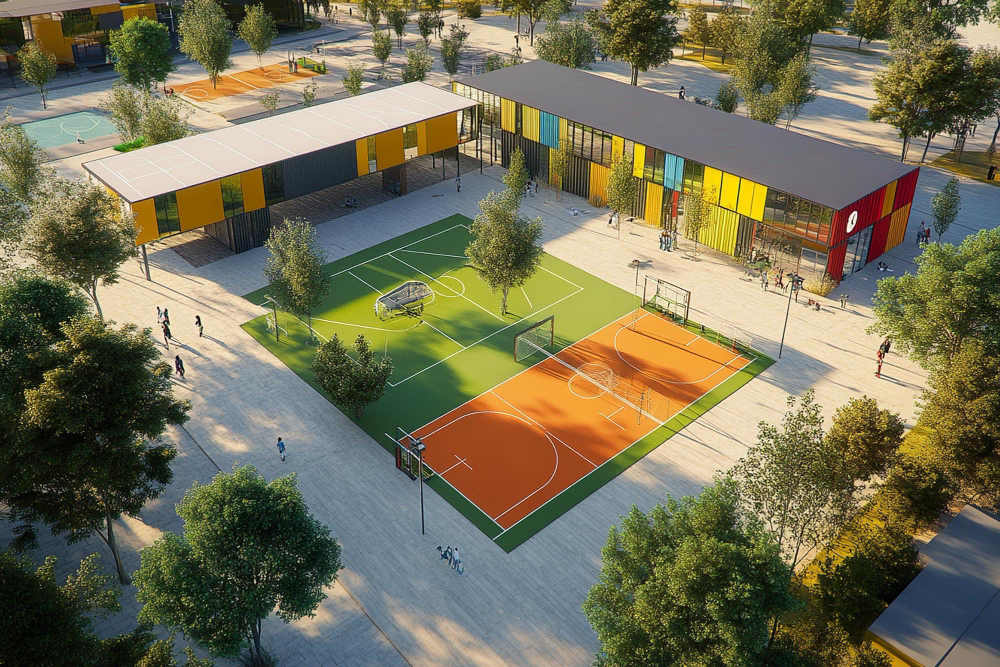Pickleball is a rapidly growing sport that combines elements of tennis, badminton, and ping-pong. Typically played on hard surfaces like tennis or basketball courts, it’s easy to wonder: Can you play pickleball on grass? The answer is yes, but there are important considerations to keep in mind. Grass introduces a unique set of challenges and advantages, making it a fun yet different experience compared to standard courts. In this comprehensive guide, we’ll explore the ins and outs of playing pickleball on grass, from setup and equipment to gameplay and safety.
Grass vs. Hard Courts: Key Differences
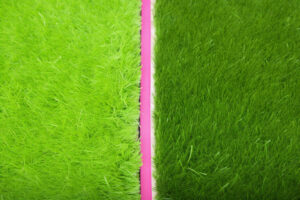
When you’re used to playing pickleball on hard surfaces, transitioning to grass can feel like playing a different game. The key difference lies in the ball bounce. On a hard court, the ball bounces predictably and at a good height, allowing for fast-paced play. On grass, however, the ball bounces much lower and is less predictable. This means that you’ll have to adjust your playing style, especially if you rely on volleys or quick, sharp shots.
Moreover, grass is naturally softer and less stable than hard surfaces, which can impact your movement. The surface can become slippery, especially if it’s wet, and uneven terrain can lead to unexpected slips or falls. This makes playing on grass more suited for casual games rather than competitive matches where speed, precision, and consistency are crucial.
Choosing the Right Grass Surface
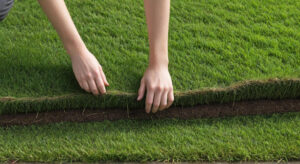
Not all grass surfaces are ideal for playing pickleball. A lush, well-manicured lawn with short, even grass is best. Uneven patches, tall grass, or bumpy ground can make it difficult to move quickly and can also cause erratic ball bounces.
Here’s what to look for when choosing a grass surface:
- Flat and even: Ensure the grass is smooth without any major dips, holes, or hills.
- Short-cut grass: The shorter the grass, the better the ball will bounce. Long grass will slow the game and reduce ball movement even more.
- Dry surface: Wet grass can be slippery and dangerous. It’s best to avoid playing after rain or on grass that holds moisture.
It’s also helpful to walk the court area before playing, removing any debris like rocks, sticks, or uneven patches to create a safer playing environment.
Equipment Considerations
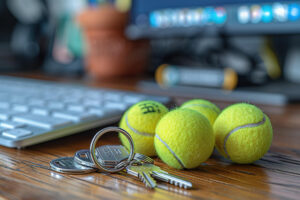
When it comes to playing pickleball on grass, the right equipment can make a big difference. Since the surface is softer and the game may be slower, you’ll want to adjust your gear to suit the conditions. Here’s what to consider:
a) Pickleball Balls
The type of ball you use on a grass court can significantly affect your game. Typically, outdoor pickleballs with larger holes are used on hard courts, but for grass, it’s advisable to opt for a lighter ball with even larger holes. This ensures that the ball travels better on the uneven grass surface and can improve its bounce.
b) Footwear
Playing on grass requires a good grip, so investing in proper shoes is crucial. Tennis shoes or grass court shoes are your best options. They provide better traction and help prevent slips. Regular sneakers may not offer enough grip, especially if the grass is slightly damp. Avoid shoes with flat soles, as they can lead to slipping.
c) Paddles
There’s no specific pickleball paddle designed for grass courts, but it’s important to choose a paddle that complements the slower pace of play. A lighter paddle may help with quick movements, while a heavier paddle can give you more control over power shots on the slower grass surface.
d) Net
Since most grass games will take place in yards or parks, you’ll need a portable pickleball net. These nets are easy to set up and can be adjusted to the proper height—36 inches at the sidelines and 34 inches at the center. Make sure the net is stable and won’t topple over during the game, as grass can be a less secure surface to anchor equipment.
Setting Up a Grass Pickleball Court
To set up a pickleball court on grass, you’ll need a bit of creativity. Unlike hard courts where the lines are permanently marked, a grass court requires some improvisation. Here’s how to go about it:
a) Court Dimensions
A standard pickleball court is 20 feet wide and 44 feet long for both singles and doubles play. You’ll need to measure and mark these dimensions on your grass surface to ensure proper gameplay.
b) Marking Lines
Use cones, chalk, or removable court lines made from plastic or fabric to mark the boundaries. Chalk may wash away in the rain, while cones can be less precise. However, you can find temporary line markers specifically designed for grass courts, which can make your setup look more professional.
c) Net Height
Set your portable net to the regulation height: 36 inches at the sidelines and 34 inches in the middle. Ensure that the net is stable, and adjust it as needed if it sags during the game.
Pros of Playing Pickleball on Grass

While grass may not offer the same speed or predictability as a hard court, it comes with its own set of benefits:
- Accessibility: If you have a backyard or live near a park, playing on grass is convenient and requires less formal setup.
- Low-impact surface: Grass is much softer on the joints compared to concrete or asphalt, making it a great option for older players or those with joint issues.
- Casual and fun: Playing on grass is perfect for family gatherings, picnics, or friendly games with friends. The slower pace and unpredictability can add a fun twist to the game.
Cons of Playing Pickleball on Grass
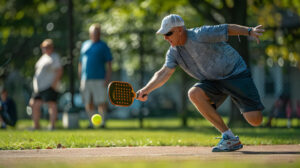
Of course, playing on grass also comes with a few drawbacks:
- Unpredictable bounces: The biggest challenge is the ball’s unpredictable bounce on the uneven grass surface. This can make competitive or serious games more frustrating.
- Higher injury risk: Uneven ground, wet grass, or unexpected obstacles can increase the risk of falls or injuries, especially if you’re moving quickly.
- Slower pace: For players who prefer fast-paced, competitive pickleball, grass may feel too slow. The ball won’t travel as fast, and rallies will be shorter.
Tips for a Better Grass Pickleball Game
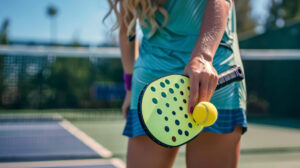
To make the most of your grass pickleball experience, keep these tips in mind:
- Adjust your expectations: Don’t expect the same speed or consistency as you would on a hard court. Grass pickleball is more about having fun and adapting to the surface.
- Keep rallies longer: Focus on keeping the ball in play rather than trying for quick winners. The uneven surface will make it harder to execute fast-paced shots.
- Play with lighter rules: If you’re playing casually, you might want to relax the rules a bit. For example, you could allow two bounces instead of one to make up for the slower ball speed.
Playing pickleball on grass offers a fun and flexible way to enjoy the sport in a more casual setting. While it may not be ideal for fast-paced, competitive games, it’s perfect for family gatherings, recreational play, or simply enjoying a sunny day outdoors. By choosing the right surface, equipment, and setup, you can create a grass pickleball court that’s both enjoyable and safe.
Whether you’re looking to play with friends or practice in your backyard, this Grass Court 101 will help you make the most of your pickleball experience on grass.



